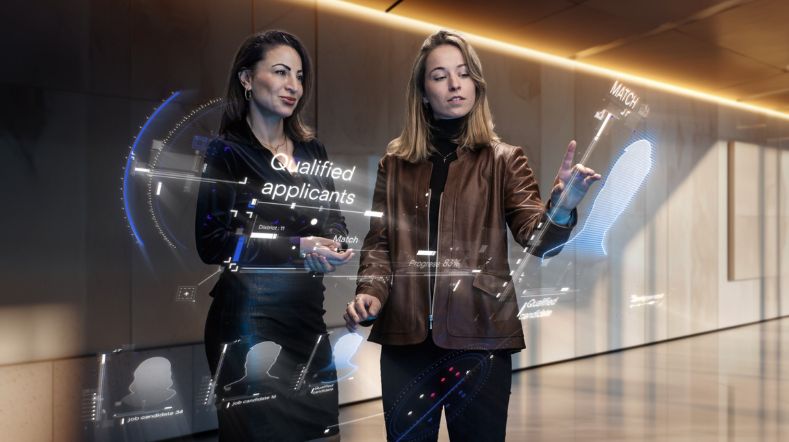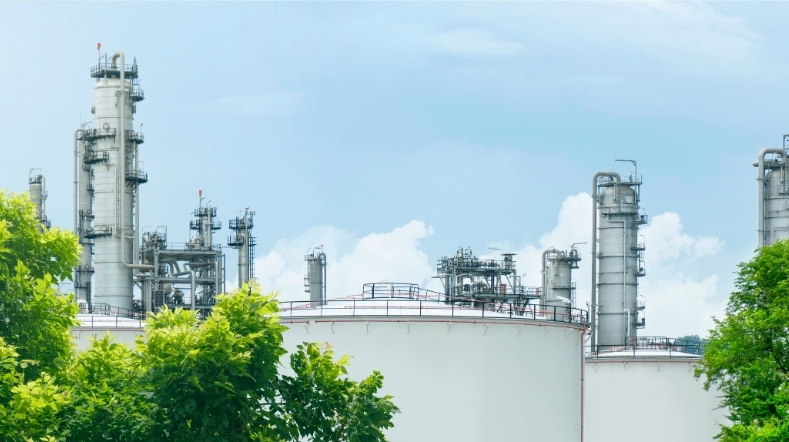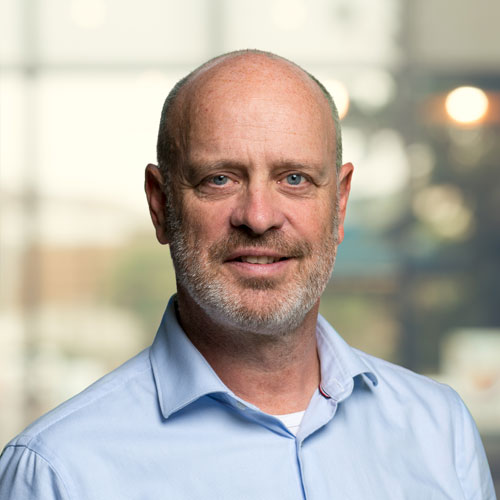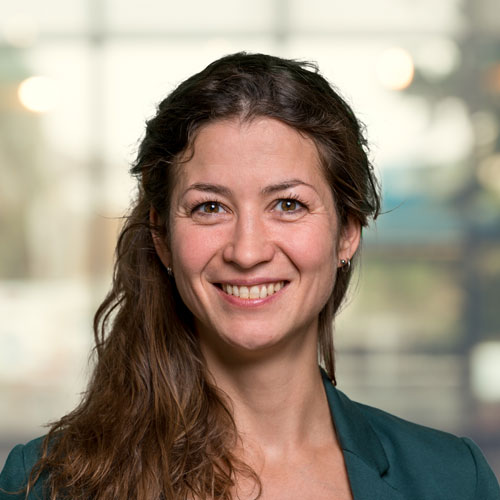Discover hybrid working 2.0: virtual meetings in the metaverse
Since the COVID-19 pandemic, many employers in the Netherlands have struggled with the challenges of combining working from home and in the office. How do you ensure there is social interaction and successfully deploy remote working for your organisation? At TNO, we carry out a lot of research into hybrid working. Using the knowledge we acquire, we advise employees on how to organise their work, and employers on how to set guidelines. In our TNO Media lab, we are also working on the latest 'immersive' innovations which enable you to meet colleagues in an almost lifelike ‘metaverse’.
Impact of remote working
During the COVID-19 pandemic, we were all forced to work remotely, which was an involuntary experiment that gave us valuable insights into the various aspects of remote working.
Lidewij Renaud, Project Leader of Work Health Technology at TNO: “Our Healthy Living unit conducts a lot of research into a healthy and safe working life. Both before and during the pandemic, we followed organisations that started with working from home, and later implemented hybrid working.
We also looked at the societal and social impact. What is particularly apparent is that we are very good at working from home. We are at least as productive at home as we are in the office, and the improved work-life balance without the need to travel was appreciated.”
Employers are also praising the positive results, and are looking at their office space differently. Large companies are considering downsizing, while some start-ups have no permanent business space at all. However, there are drawbacks.
“Young people in particular experience loneliness, and miss the informal interactions of the workplace. For employers, this new way of working requires a new way of organising both work and people, which can sometimes be complex.
With an increase in working from home, there is less of a connection with colleagues and the organisation. It is more difficult to recruit new employees. Are enough new ideas emerging? Should organisations allow employees to choose whether to work from home as often as they want, or should they be required to come into the office on mandated days?” These are questions that Lidewij Renaud and her team at TNO are trying to answer.
Finding a balance
More family time, less time in traffic jams. Finding concentration at home and connecting with your colleagues at the office. The mix of working from home and on location is proving ideal for many workers.
Lidewij Renaud: “Especially with the current tight labour market, employers can use hybrid working to present themselves as an attractive employer.” The well-known communication tools, such as Teams and Zoom, are also improving and becoming increasingly more efficient due to their new functionalities.
Yet the introduction of hybrid working does not happen automatically in all sectors, as Lidewij Renaud knows. “Like employees, employers are still looking for the right balance. There is no blueprint for how to introduce hybrid working, it requires customisation. Nevertheless, as a result of our practical research, we know more and more about what works and what doesn't.
For example, it’s important to agree as a team on working from home, rather than at an individual level. This is because a team works towards the same goals. In addition to the organisational changes required, we provide practical advice on how to set up a healthy workplace. We use a toolbox and tips to help organisations get off to a practical start.”
TNO not only offers organisations concrete advice for the situation as it is today, but we also look at tomorrow's technological innovations to further reduce the distance between home and office.
A real connection through XR applications
One such innovation originates from TNO's Media lab. Senior Scientist Sylvie Dijkstra-Soudarissanane works with her team on cutting-edge socially focused 'extended reality' (XR) applications that allow people to truly connect with each other remotely.
“Most video conferencing systems do not sufficiently succeed in engaging employees in meetings, resulting in a rapid decline in concentration. From our studies, we know this is linked to the fact that participants cannot ‘feel’ each other. You miss the so-called ‘social cues’, i.e. all non-verbal stimuli. These determine almost 90 per cent of our communications.”
Initial pilot studies show that XR techniques can help solve this problem. One of these pilots includes the following trial among the elderly: “During the pandemic, we wanted to address the huge lack of real contact with family members among the elderly, who are people at risk in this context. We used augmented reality (AR) to develop a system that allowed elderly people to see and 'feel' their families. Remarkably, elderly people with dementia could still recall the encounter and sense of connection 24 hours after their contact.”
Lifelike remote meetings
TNO has used the same technology in a pilot which takes remote meetings to the next level. We developed a social AR communication system which enables remote participants to meet in a shared space. With this, colleagues from different regions throughout the Netherlands can meet using photo realistic representations.
What is unique about this platform is that colleagues appear ‘live’ as themselves in 3D space, rather than as avatars as is currently the case. Using depth cameras, smart software and a broadband connection, it is possible to capture colleagues in different locations and 'paste' them into a virtual space or real space in real time.

The effect is lifelike, it feels as though you are actually sitting around the table with each other, which makes the physical distance seem to disappear.” The results of the VR pilot were also promising. Participants in these virtual meetings appear to rate the quality of communication much higher than for the usual video-conferencing tools. Their involvement in the meetings was also much greater: they felt as though they were together in the same room.
Curious about the results of the VR pilot?
Read the report 'Engagement and Quality of Experience in Remote Business Meetings: A Social VR Study'.
Working from home in the healthcare sector
In this pilot study, TNO has successfully demonstrated that you can create a real sense of connection using VR technology. These results open up a whole world of new applications for hybrid working.
Lidewij Renaud: “At the moment, it is mainly highly skilled knowledge workers that are able to work from home. But this may soon be possible in other sectors, such as in healthcare and education. It also makes staff more deployable.
For a complex maintenance job, you can send a less experienced employee to be supervised remotely by a specialist. Socially, this technology can contribute to greater gender equality. Women can access education where it’s currently too costly or prohibited. An application that's close to my heart.”
“I can imagine us meeting in about five years' time without a computer, just wearing our XR glasses.”
A building block for metaverse
TNO sees these social VR pilots as an important building block for the metaverse.
Sylvie Dijkstra-Soudarissanane: “The metaverse is very promising. This interconnection of virtual worlds, basically Internet 2.0, is a complex network of 3D spaces where people can interact and feel being together regardless their physical distance. We have already gained a lot of knowledge, even though it does not yet exist.
The anticipated longer-term impact of the metaverse is significant. It will become part of our daily lives, like the mobile phone. I can imagine us meeting in about five years' time without a computer, just wearing our XR technology. I see a future without screens, where you are directly holoported in the metaverse.”
Frontrunners in the metaverse
Before this happens, organisations would do well to think about the possibilities and opportunities for their specific domain.
Sylvie Dijkstra-Soudarissanane: “Wind turbine suppliers could use XR technology for remote maintenance. The world's best surgeons can pool their knowledge virtually to carry out complex operations. We can then work together in a very focused way to define use-case classes, giving you an edge in the metaverse.
At TNO, we are at the forefront of innovation. Think of us as your partner for entering and creating this new world. Together, we are building the metaverse.” Lidewij Renaud adds: “The unique thing about TNO is that not only do we know everything about this technology, but we also consider the social and societal aspects in everything we do. That provides some unique insights for those partners who work with us.”
Get inspired
TNO Announces the launch of ObjectivEye


Prospective Life Cycle Assessments for future-proof product design


Knowledge advantage in SSbD offers opportunities for Dutch chemical companies


The future of chemicals is Safe and Sustainable by Design


SSbD presents significant opportunities for the Dutch chemical sector to maintain its leadership position







